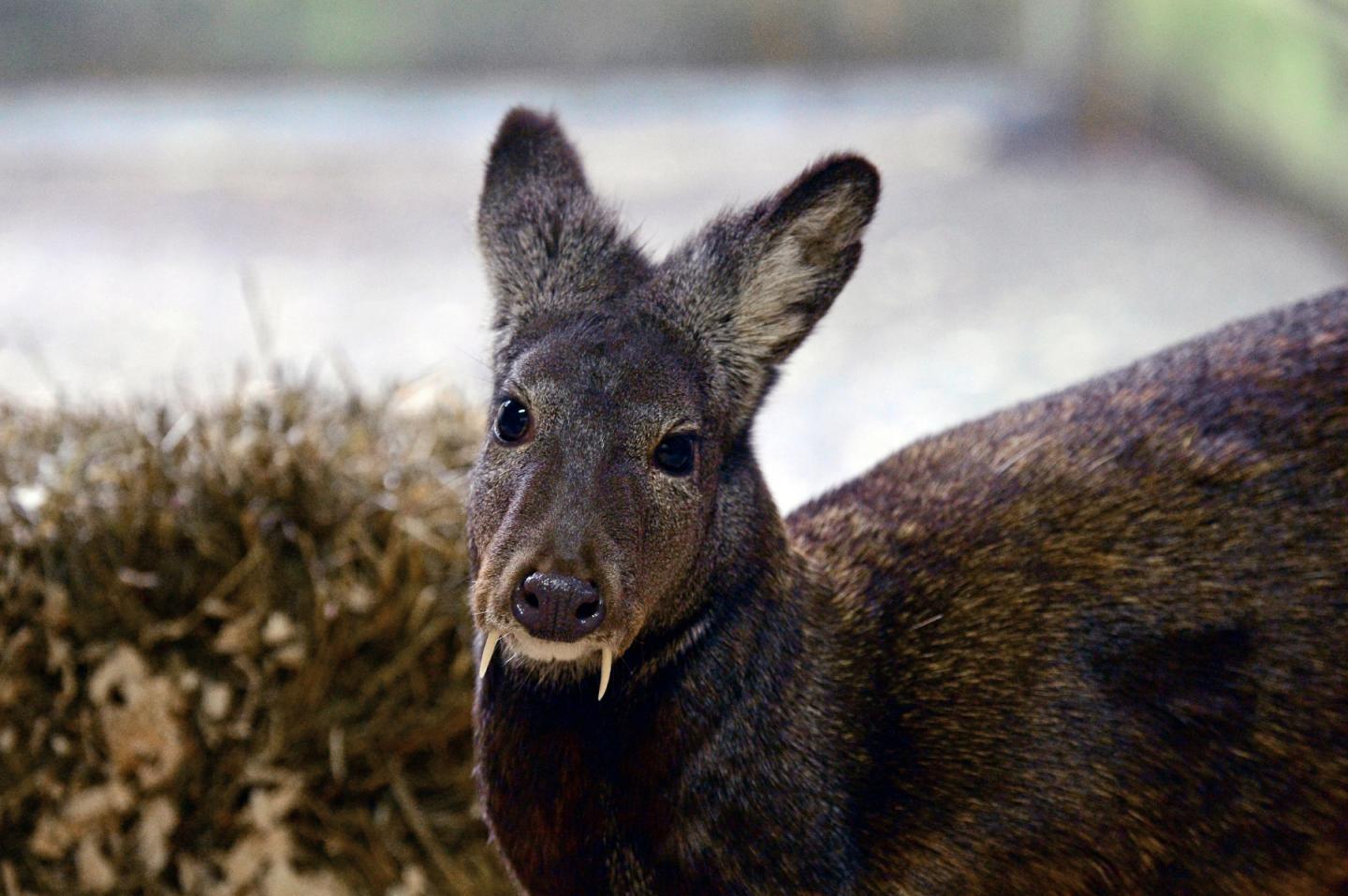More than 60 years after the last confirmed sighting, a strange deer with vampire-like fangs is roaming the rugged forested slopes of northeast Afghanistan, according to a research team which confirmed the species presence during recent surveys.
Known as the Kashmir musk deer, the last scientific sighting in Afghanistan was made by a Danish survey team traversing the region in 1948. The species is categorized as Endangered on the IUCN Red List due to habitat loss and poaching. Its scent glands are coveted by wildlife traffickers and are considered more valuable by weight than gold, fetching as much as $45,000/kilo on the black market. The male's distinct saber-like tusks are used during the rutting season to compete with other males.
Writing in Oryx, a research team says the endangered musk deer still live in Nuristan Province.

The unusual fangs of a musk deer are used by males during the breeding season. A recent WCS study found a population of Kashmir musk deer living in Afghanistan. Photo shows a Siberian musk deer -- one of seven similar species found in Asia. Credit: Julie Larsen Maher © WCS
The survey team recorded five sightings, including a solitary male in the same area on three occasions, one female with a juvenile, and one solitary female, which may have been the same individual without her young. All sightings were in steep rocky outcrops interspersed with alpine meadows and scattered, dense high bushes of juniper and rhododendron. According to the team, the musk deer were discrete, cryptic, difficult to spot, and could not be photographed.
The authors say that targeted conservation of the species and its habitat are needed for it to survive in Afghanistan.
Although the deteriorating security conditions in Nuristan did not allow NGOs to remain in Nuristan after 2010, the Wildlife Conservation Society maintains contact with the local people it has trained and will pursue funding to continue ecosystem research and protection in Nuristan when the situation improves.
"Musk deer are one of Afghanistan's living treasures," said co-author Peter Zahler, WCS Deputy Director of Asia Programs. "This rare species, along with better known wildlife such as snow leopards, are the natural heritage of this struggling nation. We hope that conditions will stabilize soon to allow WCS and local partners to better evaluate conservation needs of this species."






Comments